Now on view through July 3 at Marlborough Gallery in New York is “Revelations,” an exhibition of images by pilot and photographer Olivier Dassault. Including over 30 photographs taken over the last 30 years, “Revelations” is a display of Dassault’s dynamic style and unique techniques, which work together to give his viewers a new take on everyday life.
Dassault, who has been working with film since a young age, uses manipulations like superimposition and multiple exposures to create his kaleidoscopic abstract images. Curious to learn more, Whitewall spoke with Dassault about his recent work, moving away from advertisement photography, the importance of patience and lighting, and where he finds his inspiration.

Photo by Ben Dauchez.
Courtesy of Olivier Dassault.
WHITEWALL: Can you tell us a bit about where your interest in photography began?
OLIVIER DASSAULT: I started getting into photography from a very young age. My mother would bring me to museums. I remember specifically a visit in Greece where the Parthenon evoked many things without me realizing it. It was a magical moment—24×36, the number of gold. I immediately placed the Parthenon in a gold rectangle which is that of the photo camera. At the time I was using an instamatic camera. Then I got into portraits, portraits of young girls, of my younger sister with a reflex camera…
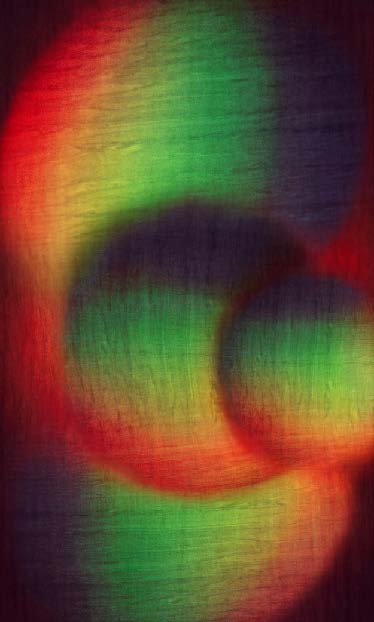
Amazonie.
Courtesy of Malborough Gallery.
This was in the 1960s, and since that day in Greece, I have remained loyal to Minolta cameras. Today, I still use process cameras. Not the Minolta cameras of the first days of the camera, of course, but ones that date back to around 40 years ago.
The advantage of a photographer compared to a painter is that the creation is much more rapid, except if he limits himself to one style according to the galleries. Something a lot of people have told me is that you need to have a style in order to be recognized, and you cannot do too many different things. Over the course of the years, I let my inspiration flow and I touched upon almost all kinds of style, starting from The Impressionissim, which is my favorite book dedicated to my grandfather who loved impressionist painters. He couldn’t understand that a photo could be blurry. For him, a photo had to be neat and clear. Then I got into surrealism and hyperrealism, with a quick period in symbolism, and then I finally got into abstraction. But in my first book, there was already one or two abstract photos thanks to the surimpression and the geometric figures, but also specifically thanks to a building which is very close. The building’s windows are black and everything else is done out of white stones.
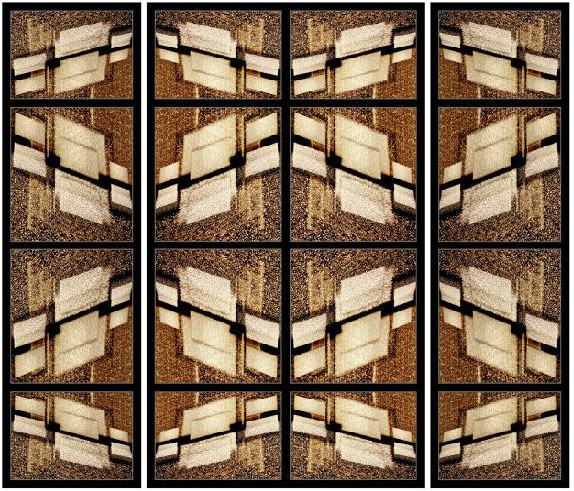
Parabole.
Courtesy of Malborough Gallery.
WW: It’s the W.R. Grace building where Chanel’s offices are, right?
OD: Yes, it’s that building. So, I reviewed this building because there was a lot of subject inspiration from it—from the portraits of the young girls in flowers and also an advertisement that I realized for Nina Ricci thanks to Jean Barthet who came up with a flower hairstyle, which really pleased Robert Ricci. I shot another advertisement for Sisley. I had my own advertising agency in the ‘80s, but I let go of advertisement in order to not sacrifice myself only to commanded work and to mostly let my inspiration flow according to the locations in which I find myself in. That is my secret, firstly to have cameras always at hand. I don’t have always have them on me and that is a horrible feeling. So, then I take a virtual photograph but it’s not the same thing.
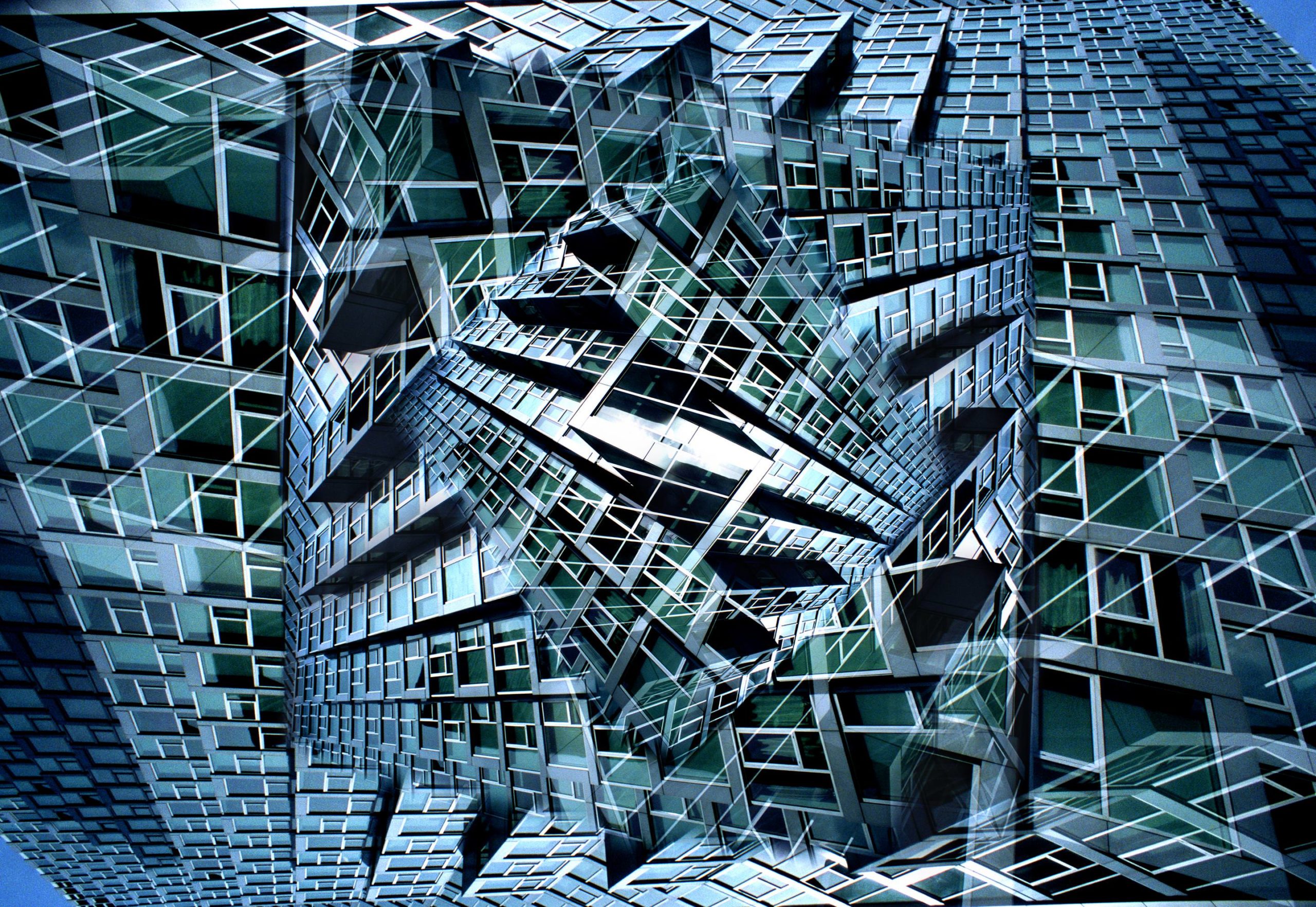
Subversion.
Courtesy of Marlborough Gallery.
WW: And the mobile phone?
OD: Yes, but it’s not the same thing. We can’t do any surimpression with the mobile phone. And for me, my secret that I developed over the years, is to really be able to see a subject and to be immediately be able to see the abstraction that you can do with it. But the main secret is the lighting. The lighting must always be on point at the right time of the day according to the sunlight. It must always be natural and not later than midday.

Carré.
Courtesy of Olivier Dassault.
And going back to the Solow Building, at the place where I stood, there was a bit of sun at a certain moment and I photographed the blinds on the windows, which were surrounded by the black. In impressionism, the white brings out on the black. On the surimpression, it’s the black that brings out on the black. It is not at all the same thing. And with that I created an abstract creation, and I will see the result once I develop my film.
That is also part of the great joy that imposes patience but also brings about reward of success of the discovery of the creation that we initially imagined. Sometimes it’s not as good, sometimes it’s exactly what we wanted, and sometimes it’s even better. And that is what is magical.
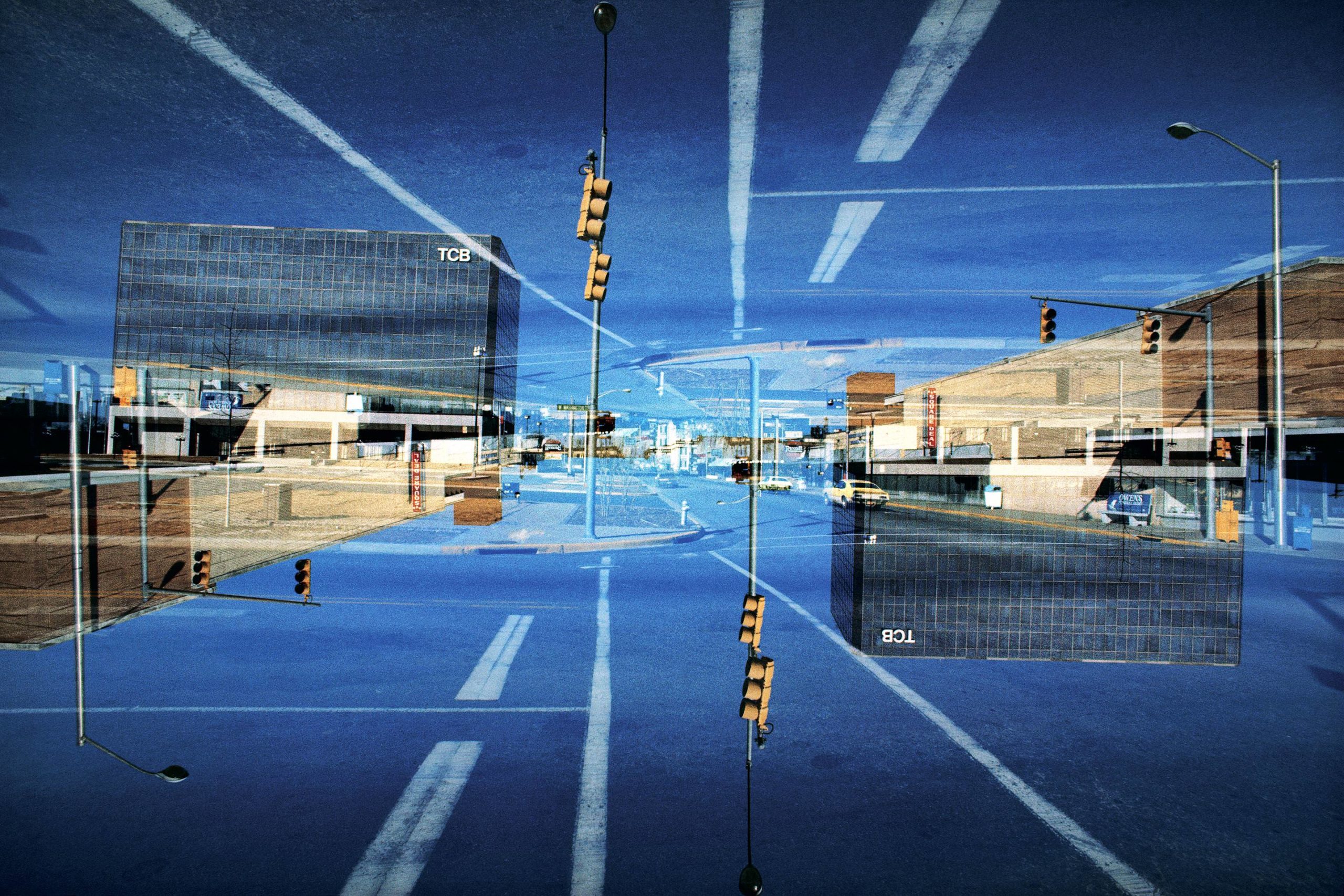
Downtown Blue.
Courtesy of Olivier Dassault.
WW: You said you started the surimpression movement through the photo of the building in New York. How did evolution toward this technique take place? Was it a sudden instinct?
OD: It wasn’t really linked to abstraction, but rather to the fact that I used to take a full roll of photos of clouds and then I would rewind the film, replace the battery, and reuse the same film. It had to be perfect because otherwise it was undesirable. It allowed me, at a time where there was no Photoshop, to be able to put dancers on a cloud for example.
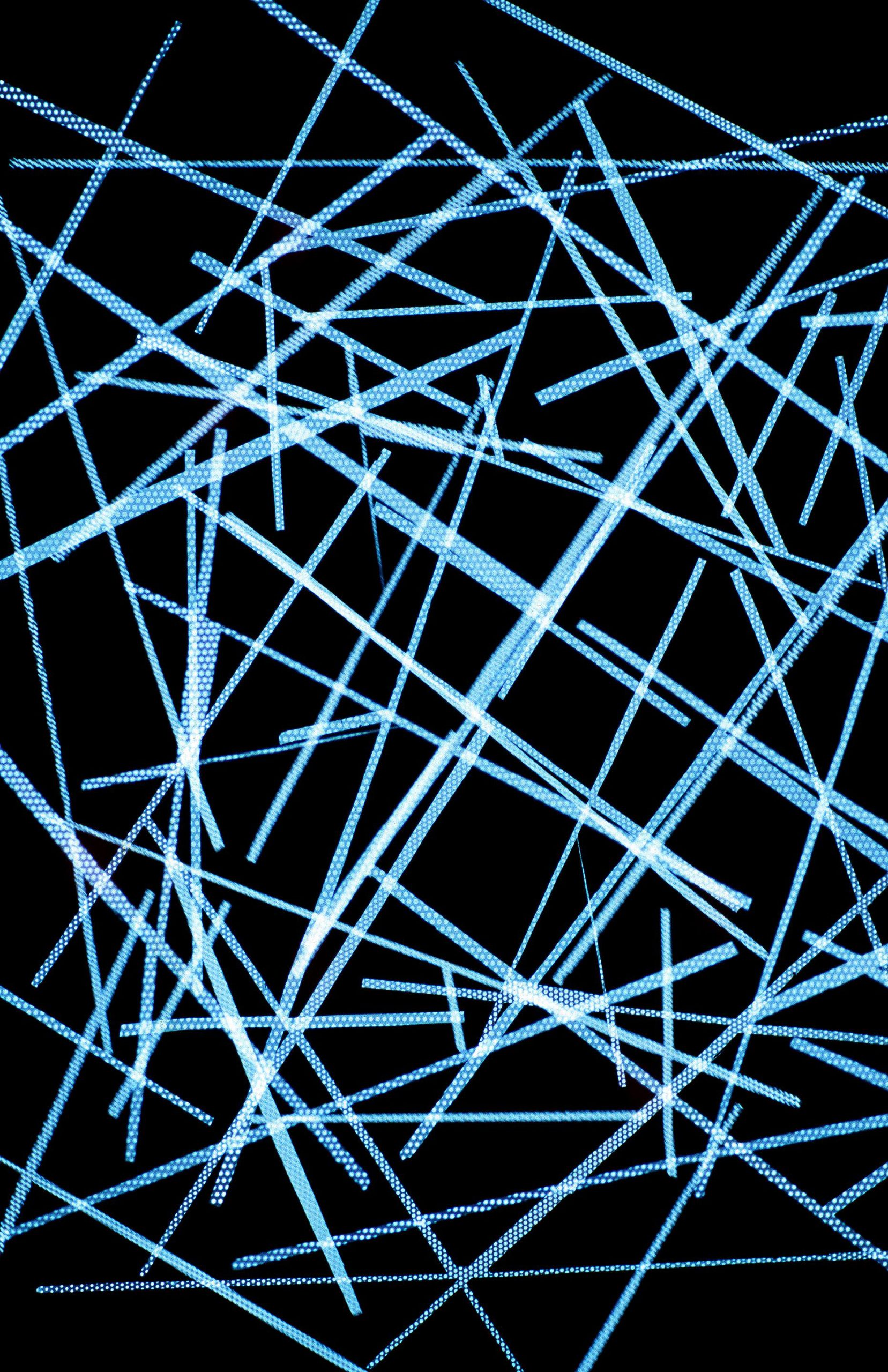
Enigme.
Courtesy of Olivier Dassault.
WW: Can you tell us the stories behind your recent works?
OD: The book I did on Egypt was prefaced by Anouar El Sadate and it was a beautiful encounter. It was also a very beautiful volume. It consists of realist photos, as well as impressionist photos. For example, the Abu Simbel temples, which have been displaced from water in link with the accumulated drift of the Tropic of Cancer, I was able to re-put in, under water through the impression of water and surimpressionism.
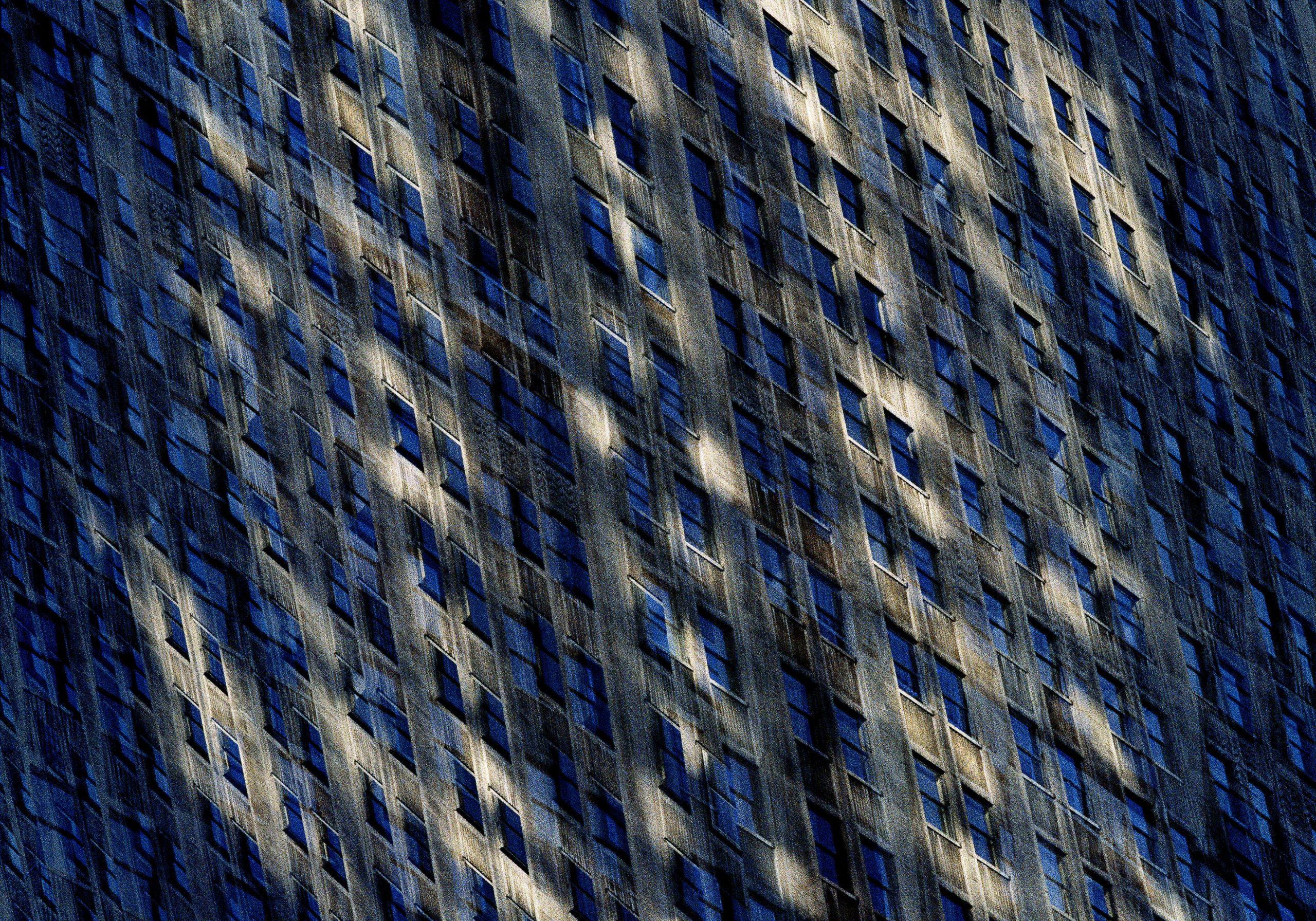
Metropolis.
Courtesy of Olivier Dassault.
WW: Does the fact that you are a pilot play a role in your photography?
OD: Of course. In fact, even in my first book, I wrote texts about the beautify beyond the clouds.
I also took many photos of cockpits, the sky, and abstract photos. People who ask me with complete amaze how I took the photos with the sky upside down and all those aspects. I would smile and respond by saying I would turn the plane one way and take a photo, then turn the plane the other way and take another photo, then go upside down and take another one. Then I would tell them I am half-joking. It is not the plane that turns around and around, but the camera. That is the magic of the camera—it turns.
As years went by, one day I made a book called Sky, which brings together all those photos.
WW: How does traveling act as a source of inspiration?
OD: What’s funny is that the inspiration does not come from the most famous monuments. Yes, I do have a photo of the Taj Mahal in India, like many tourists do. But I found a young girl with braids. She had one braid with a pink bow and another braid with a red bow and I made a final sur-impression photo in which I took a photo of her and then I placed her in the photo I took of the Taj Mahal. So, in that sense it’s an original photo.
I rarely take a guide because they tend to showcase the historic monuments. What interests me is the location in which the monument stands. For instance, in South Korea, in the old town of Seoul, while a guide was telling us about the history of a temple, I started taking photos of the palisades which had many colors. This photo is a tribute to Mondrian. And this shows the originality of my photography.
Sometimes I get stuck in front of a simple wall that is tagged and has drawings, and from this wall I make certain creations. And people ask themselves, “Who is the madman who takes photos of a wall?” A wall for them in which they don’t see anything but just a wall.
WW: So today, with the iPhone, we can’t do surimpression. So what kind of tool is it for you?
OD: For me, the iPhone is more a tool used to remember from what I did the final photograph. Today, film is limited and so I only take certain aspects—those that enable me to make the final creation of my photography. It is kind of like the witness photo that allows for the greater creation. But in reality, I don’t remember where I took the photo. Many times I ask myself, “But where did I take that?” Photography is magical. There are beautiful formulas.
WW: Who are your favorite photographers?
OD: Edward Steichen is part of my favorite photographers. Actually, Chantal once found a book he did of black and white abstractions. There are encounters with artists, which are timeless, and they create a source of common inspiration.
I am a photographer who has the problems of a painter and the desire to discover the limits of the camera in order to go beyond those limits. I am looking to find things with a different light. Many times, I pass a certain place, and I tell myself, “This looks interesting. I must come back.” And then you never have the same lighting; it is never the same scene. For me, the camera is like the paintbrush for the painter.









